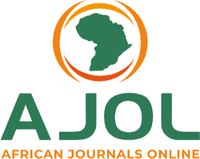APPRAISAL OF DRAINAGE CONDITIONS AND FLOOD FREQUENCY IN CALABAR, NIGERIA
DOI:
https://doi.org/10.56892/bima.v3i01.119Keywords:
flooding, urbanization, storm, water, rainfallAbstract
Flooding has been identified as one of the major factors that prevents Africa’s growing population
of city dwellers from escaping poverty and stands in the way of United Nations 2020 goal of
achieving significant improvement in the lives of urban slum dwellers. The rapid increase in
urbanization without corresponding infrastructures in Calabar metropolis has led to increased
incidences of flood. The available drainage channels in the area cannot contend with the volume
of storm water. The study is aimed at appraising the drainage conditions and flooding frequency
in Calabar metropolis. This study therefore, establishes gauging stations for the measurement of
drainage run off using stop-watch method (velocity of flow), measuring steel tape, and copies of
questionnaires were administered to 400 households proportional to seven sample units. The time,
volume of flooded water was measured using stop watch, measuring velocity of flow. The
frequency of flood is compounded with its intensity as over 59% of the sampled population agreed
that flooding is very high in Calabar. The study also revealed that as shown in frequent floods in
the city. The incessant flood often leads to water inundating compounds (64.5%), preventing
people from going out (11.25%), distortion of the scenic beauty of the environment (6.25%),
landslide (4.75%). However, it was not waters from the Ocean that usually floods the city but the
heavy rains, and the low nature of the topography and the poor drainage networks, increased paved
surfaces, river channel encroachments, poor waste disposal techniques, physical development
control problems, gaps in basic hydrological data and cultural problems as major causes of street
flooding in Calabar metropolis. Based on these findings, the study recommended that since Calabar
is located in a tropical zone characterized by heavy rainfall the government should take proactive
measure to mitigate storm water. It is recommended that the present drainage systems in Calabar
metropolis should be cleared on regular basis to allow for a free flow of storm water in the area.





